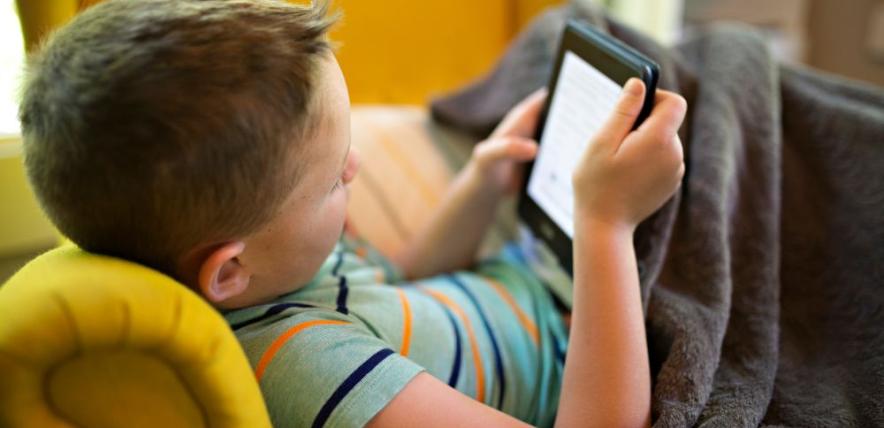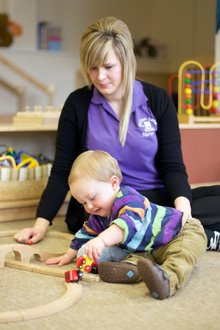 It is impossible not to notice that children are accessing devices and going online for more time, and from a younger age. A recent Ofcom report stated that 87% of 3–4-year-olds go online (e.g. watching video streams on the TV, video sharing platforms, sending messages, social media and playing games), with approximately 20% owning a mobile phone. Linked to this is the concern that some of the risks associated with going online (such as bullying, accessing inappropriate content and taking sexual images) are affecting ever younger children.
It is impossible not to notice that children are accessing devices and going online for more time, and from a younger age. A recent Ofcom report stated that 87% of 3–4-year-olds go online (e.g. watching video streams on the TV, video sharing platforms, sending messages, social media and playing games), with approximately 20% owning a mobile phone. Linked to this is the concern that some of the risks associated with going online (such as bullying, accessing inappropriate content and taking sexual images) are affecting ever younger children.
Adults (predominantly parents, carers and early years professionals) are usually the initial gatekeepers who make provisions for and allow children to go online. So, if we allow young children to go online, it is crucial that we take responsibility for managing this by understanding the key risks, how to protect from these, and most importantly the best ways to promote safe, healthy and fun online activity.
When should my child start going online and using devices?
Ultimately this is for parents to decide, however we know that in the first 5 years of a child’s life the focus should be on developing a child’s communication, language, physical skills and emotional development. As such, the World Health Organisation recommends children should “sit less and play more”. They recommend no sedentary screen time at all for under 2-year-olds. For children aged 2 - 4 years, a maximum of 1 hour per day sedentary screen time is recommended (less is better). The main reason for this is that there is much more developmental benefit when children spend their time engaging in things like physical activity, social interactions and exploring literature with an adult, compared to being passive and sedentary in front of a screen.
What do I need to know?
Apps, games, devices, sites …. It can all feel quite overwhelming and sometimes intimidating. But there are some very basic and key principles outlined below that will help you, when you have decided that it is the right time for your child to start accessing devices and going online:
- Decide what devices/apps/games/websites you want your child to use. How will your child benefit from these? Try and offer a varied digital diet (i.e. not all sedentary and passive consumption) including things that promote physical movement and other key areas of child development.
- Learn about the tech you want children to use (don't leave this to your child or others to decide). You don’t have to be an expert, but it is important to know about any age restrictions and also about any parental settings that you can put in place to protect your child. Controls can be put in place on individual sites, games and apps as well as on devices themselves for things like the amount of time spent online. This LGfL webpage may help. On this page you will find links to great information from Internet Matters and Common Sense Media.
- Talk to your child about their online activity. Find out what they enjoy. Talk to them about how it makes them feel. These initial conversations will help to create open and honest dialogue with your child, so that as they get older, they will hopefully feel comfortable talking to you, and confiding if things go wrong.
- Where possible engage with your child when they are using technology, to make it an active rather than passive process. Talk to them about what they are doing/watching/playing. Talk about any skills they are using. Be interested. Ask them to show you what they are doing. Extend their online interests and learning when they are not on the device.
- Agree ground rules. How long will they spend on the device? When will devices be used in the day? What happens at the end of this time? What should they do if something makes them feel worried or sad? Also remember that you are the biggest role model for your child, so agreeing shared rules for the whole family to follow (including parents!), can be extremely helpful to ensure everyone is using devices mindfully. Here is an example of a Family Digital Agreement you could use.
We hosted a free webinar with LGfL on Screens in the Early Years on Thursday 8 June 2023.
In the session, Alex Dave and Mark Bentley from LGfL charitable trust explained practical steps you can take to make sure your child is safe when using a device, and how to promote healthy use of devices with your little one.
The full thought-provoking webinar is available to watch below.
LGfL - The National Grid for Learning is a charitable trust that is passionate about saving schools money, keeping children safe, tackling inequality, energising teaching and learning and promoting wellbeing. Its mission is the advancement of education. It does not profit from schools and reinvests any profits it makes into education.
Further Info
If you are interested in finding out more about keeping your child safe online, have a look at the following links:
- ParentSafe, LGfL
- Keeping your under 5 safe online, CEOP
- Online Safety Tips for Parents of Pre-School Children, Internet Matters
This article was written by Alex Dave, safeguarding education officer at the London Grid for Learning Trust’s (LGfL) DigiSafe team.








